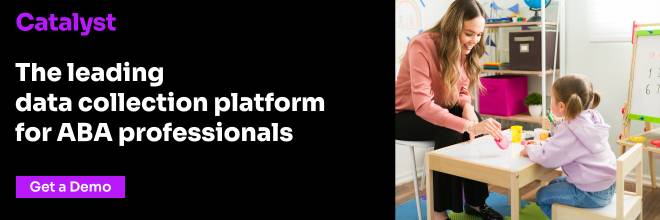As a BCBA, you’re constantly looking for effective strategies to enhance your therapy sessions and improve outcomes for your clients. One technique that has gained attention in recent years is incidental teaching. But what exactly is incidental teaching, and should you incorporate it into your ABA therapy programming?
What is Incidental Teaching?
Incidental teaching is an approach that takes advantage of natural learning opportunities in the client’s environment. Unlike structured teaching methods, incidental teaching uses everyday situations and activities to encourage learning and skill development.
The primary focus of incidental teaching is to make the most of the client’s interests and motivation. By incorporating learning opportunities into their natural surroundings, we can provide a personalized and engaging experience that helps the client generalize their skills.
How Incidental Teaching Works in ABA Therapy
In ABA therapy, incidental teaching can be applied across various domains, such as communication, social skills, and daily living skills. By using incidental teaching techniques, you can foster spontaneous communication, problem-solving, and independent living skills in your clients.
For example, let’s say you’re working with a child who is working on expanding their vocabulary. Instead of sitting at a table and going through a list of pre-selected words, you might choose to introduce new vocabulary by following the child’s lead during playtime. If the child shows interest in a toy, you can use that opportunity to label the object or initiate a conversation about it. By incorporating language learning into the child’s ongoing activities, you can create a more natural and effective learning experience.
The Benefits of Incidental Teaching in ABA Therapy
There are several benefits to incorporating incidental teaching techniques into your ABA programming:
- Increased motivation: By using a client’s preferred activities and interests as teaching opportunities, incidental teaching can boost motivation and engagement during sessions. When someone is genuinely interested in the task at hand, they are more likely to be actively involved and motivated to learn.
- Improved generalization: One of the challenges in ABA therapy is promoting the transfer of learned skills to different settings and situations. Incidental teaching encourages generalization by embedding learning opportunities within the client’s natural environment. This increases the likelihood that skills learned in therapy sessions will be applied outside of the therapy room.
- Enhanced social interaction: Incidental teaching provides ample opportunities for social interaction between you and your clients. Through naturalistic exchanges, you can support the development of turn-taking, joint attention, and other vital social skills.
- Individualized learning: By tailoring teaching moments to the client’s specific interests and strengths, incidental teaching allows for a more personalized learning experience. This individualization can lead to a deeper understanding and retention of skills.
Get a free demo of Catalyst’s Electronic Data Collection Software, designed by and for BCBAs.
Incorporating Incidental Teaching into Your Practice
To effectively incorporate incidental teaching into your ABA therapy practice, keep the following tips in mind:
- Identify naturalistic opportunities: Identify everyday situations and activities that provide teaching moments, such as playtime or mealtime.
- Follow the client’s lead: Use the client’s interests and motivations as a foundation for creating teaching opportunities. Observe their preferences and engage with them within their ongoing activities.
- Reinforce and prompt: Provide positive reinforcement for desired behaviors and prompt when necessary. Use gentle prompts or cues to guide the client’s learning without interrupting their flow.
- Promote spontaneous communication: Encourage spontaneous communication by creating an environment that allows the client to initiate conversations, ask questions, and express their needs and preferences. This can be achieved by actively listening, maintaining eye contact, and using positive body language. Be responsive and receptive to the client’s attempts to communicate, no matter how small.
So, should you use incidental teaching techniques in ABA therapy? It’s definitely worth considering. Incorporating incidental teaching techniques into your ABA programming requires practice and adaptability. It may not be suitable for every client or every goal, but when used appropriately, it can be a powerful tool to promote generalization, motivation, and individualized learning experiences.
Incidental Teaching with Catalyst
Incorporating data collection software, such as Catalyst, into incidental teaching practices can provide additional benefits in ABA therapy. By using Catalyst, therapists can seamlessly track and analyze data during incidental teaching sessions, enabling more efficient and accurate assessment of progress and skill acquisition. Catalyst can help identify trends, measure growth, and inform decision-making to ensure individualized and effective intervention. Plus, with its user-friendly interface and real-time data tracking features, you can focus more on facilitating spontaneous communication and teaching moments, while still having access to valuable data for analysis and planning.
To learn more about how Catalyst can improve behavior intervention and analysis, schedule a demo today.

